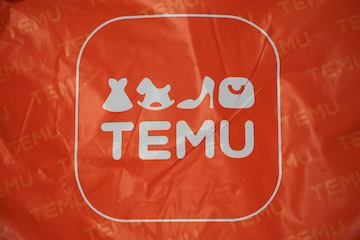Direct-to-consumer brands eager to find customers have an opportunity with Temu, China’s fast-growing discount marketplace.
In February 2024, Temu launched a US seller program, effectively opening up the platform to US businesses. The program gives US brands access to an estimated 185 million domestic and international shoppers each month – and growing.
In 2023, Temu became Apple’s most downloaded free app, and in 2024, it dominated the iOS and Android app stores.

Temu USA’s home page focuses on discount items.
US Reseller Program
Temu, like its sister site Pinduoduo, operates primarily on a consignment model.
Chinese and East Asian manufacturers fill Temu’s warehouse with goods and create product listings for the marketplace. After the sale, the item is shipped directly from the Temu facility in the familiar, bright orange bag using smart airfreight strategies to keep costs low.
The company recently began allowing US merchants to list products and optional use Temu’s warehouse and fulfillment system.
The program is free for small sellers, but the company requires a subscription ranging from 2% to 5% of the sales price. At the time of writing, the marketplace also charges a payment processing fee of 2.9% + $0.30 per transaction, and sellers pay all shipping costs. Overall, the fees make Temu similar to other marketplaces.
DTC opportunity
Temu’s low prices may not sit well with traditional retailers, but DTC brands could have an opportunity.
The DTC product is unique. Similar products may exist in Temu, but none are identical. In addition, American products may have a competitive advantage due to perceived value and quality.
All in all, I see five potential benefits for DTC brands selling on Temu.
Brand building
DTC brands on Temu can introduce shoppers to a company and build relationships.
An introduction occurs when a Temu shopper finds the brand’s products. The relationship begins with the fulfillment of the order. DTC sellers can include a physical product catalog, a coupon for a free item, or a note describing the brand’s story in the packaging.
Items requiring warranty registration offer the option to collect the buyer’s email address and phone number.
Income
Any established sales channel is an income opportunity. Temu has a huge user base, and those customers, however discount-minded, are an opportunity.
Media agency Temu told me the company doesn’t share the retailer’s estimated or average sales. DTC stores should test, optimize and iterate on the platform.
Marketing
DTC brands that list products on Temu can participate in platform-wide promotions and flash sales, driving listing traffic and thus more interactions.
Chinese expansion
DTC brands can flip the script and offer products to Chinese buyers through inventory stored in Hong Kong or other Temu locations.
Product development
The absence of a fee for inclusion in Temu makes it easier to test new items. DTC brands can create short runs of product prototypes, offer them on Temu, and learn what resonates with customers.
Marketplace Generally
Selling on Temu should be part of the overall market strategy for DTC brands.
A brand selling in one market may consider others. So listing on Amazon, Temu, Walmart, Esty and eBay could be part of an overall market approach, such as:
- Set marketplace-specific goals. Define revenue goals, customer acquisition rates, or brand awareness metrics for each market.
- Build your market audience. Use analytics to learn customer demographics and purchasing behavior based on individual markets. A Temu shopper is likely to be different from an Amazon or Walmart shopper.
- Align products with the market. A brand may have several versions of similar items. Maybe the top quality items are on Amazon and the entry level items are on Temu. Returns and seconds could be sold on eBay.
- Optimize product listings. Common optimization tactics across all marketplaces include quality images, keyword-rich descriptions, and competitive pricing. However, be aware of platform-specific practices, conventions, and rules.
